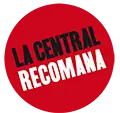Joan Miró. The Ladder of Escape


Joan Miró. The Ladder of Escape

Sense existències ara
Rep-lo a casa en una setmana per Missatger o Eco Enviament*Sobre el llibre Joan Miró. The Ladder of Escape de publicat per Tate al 2011:
Joan Miro´s paintings are among the most widely recognized of any modern artist, reproduced everywhere from books to t-shirts and Spanish tourist posters. While he is most often seen as a surrealist or a post-war abstract painter, terms he rejected, this book brings new insights into Miro´s work by framing it in the context of the turbulent times in which he lived. Miro´s contemporary Picasso left Spain, promising never to return under a Fascist government. In contrast, Miro chose internal exile, removing himself to the island of Mallorca, a decision that has led to him being viewed as a less politically committed artist. This book challenges that impression by focusing on Miro´s politically engaged works, from the rural, anarchist tradition and strong Catalan nationalism reflected in early paintings "The Farm" and "Head of a Catalan Peasant", through to the triptych "The Hope of a Condemned Man", painted in 1974, by which he publicly declared his opposition to Franco. Drawing on new scholarship from an international range of experts, and accompanying the first exhibition in Britain for nearly half a century to show work from throughout Miro´s career, "Joan Miro: The Ladder of Escape" throws new light on the life and career of one of the greatest artists of the 20th century. Tate GalleryEl llibre Joan Miró. The Ladder of Escape de pertany a la matèria
Veure altres ressenyes de Art
Ressenya
Marc Fumaroli
“Mundus muliebris”. Élisabeth Louise Vigée Le Brun, pintora del Antiguo Régimen femenino
Vigée Le Brun era hija de padre pintor y, además, esposa de un marchante de arte, hecho este último que la hacía candidata inaceptable en la Academia de pintura y escultura.

Ressenya
Marta Piñol Lloret
Mitos e imágenes
Las imágenes que nos rodean pueden surgir o pueden adquirir un significado mítico. Imágenes próximas, imágenes místicas, imágenes de empoderamiento, imágenes sobre los principios y los finales, tod...

Ressenya
Sarah Watling
Mañana quizá el futuro
Mañana quizá el futuro nos permite a los lectores de hoy entrever cómo en la historia se da constantemente una lucha por el relato, además de vislumbrar a una generación rebelde dispuesta ...

Ressenya
Joana Masó y Éric Fassin
Elsa von Freytag-Loringhoven. La artista que dio cuerpo a la vanguardia
Alrededor del año 2000, el hallazgo de varios documentos inéditos hizo que la crítica planteara la posibilidad de que la Fontaine (1917), obra firmada por R. Mutt, y generalmente atribuida...
















